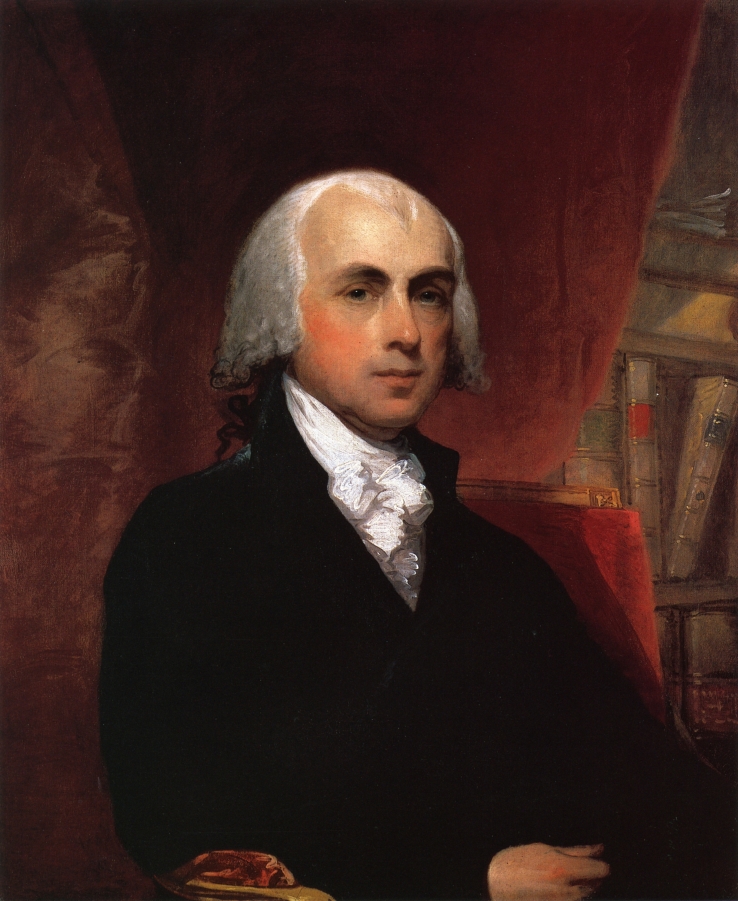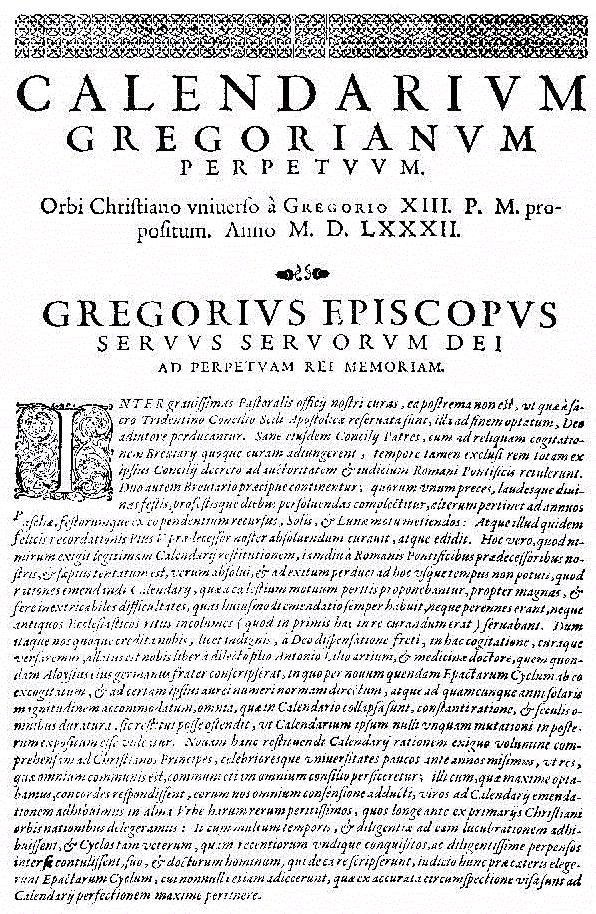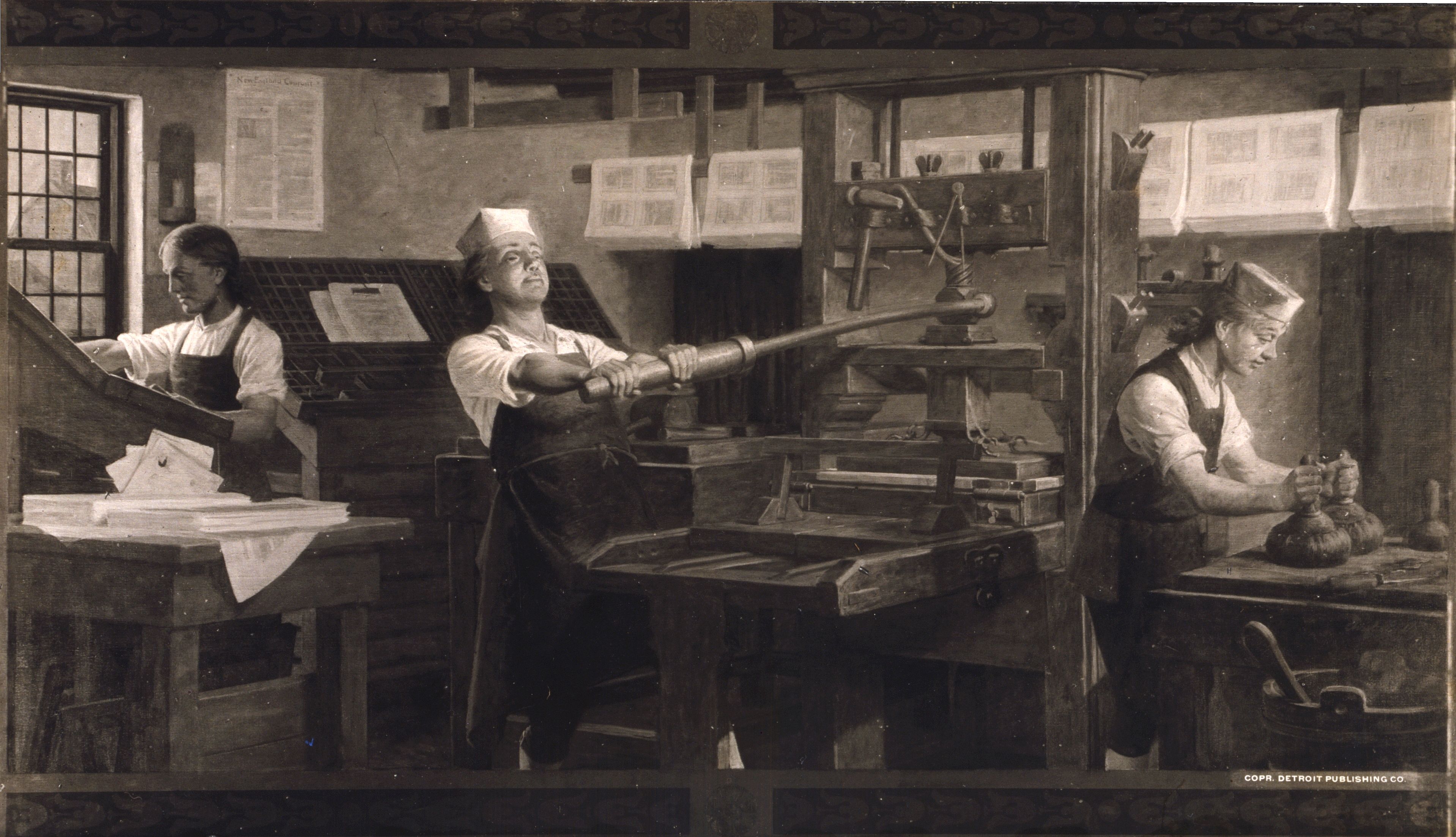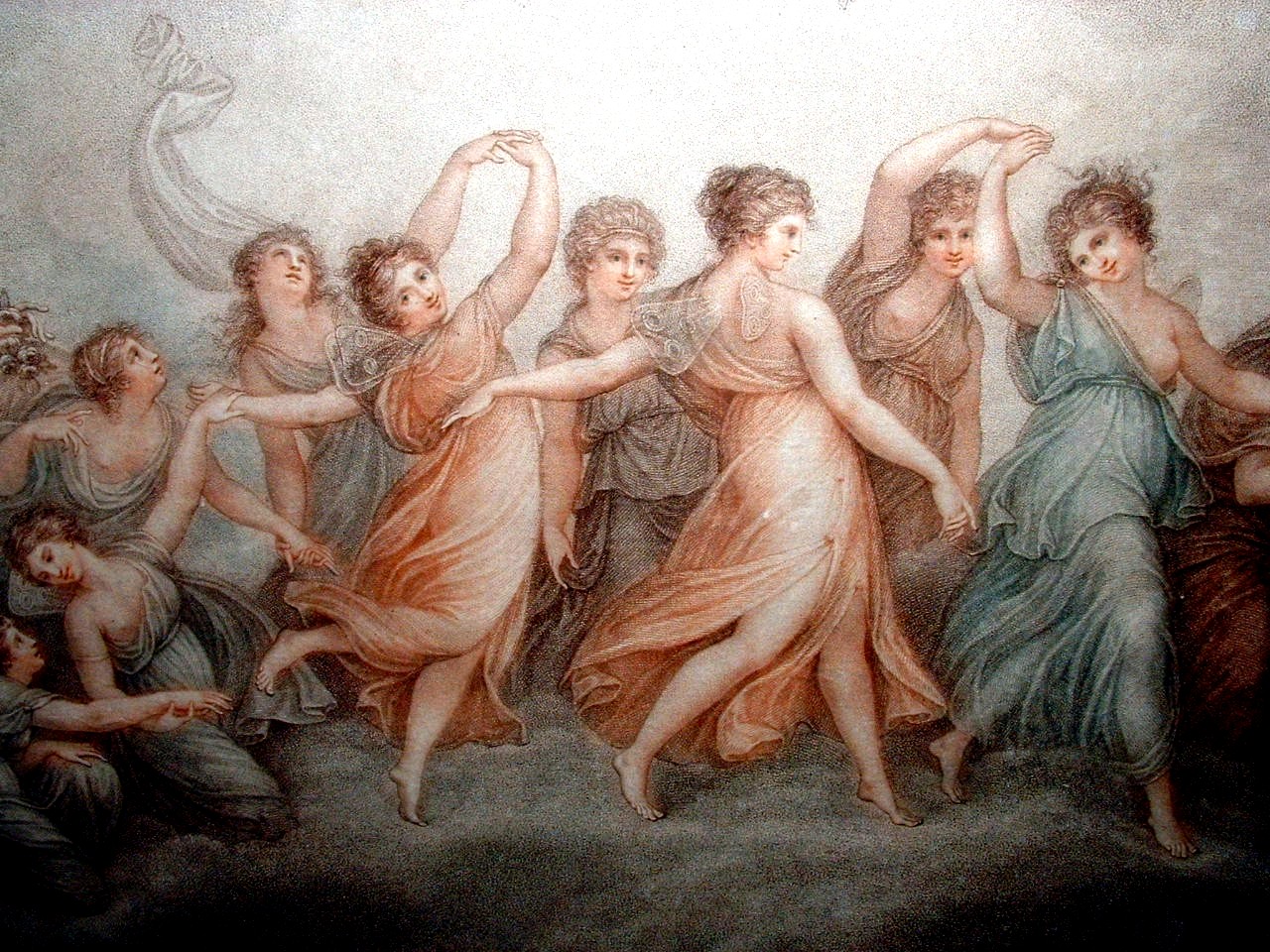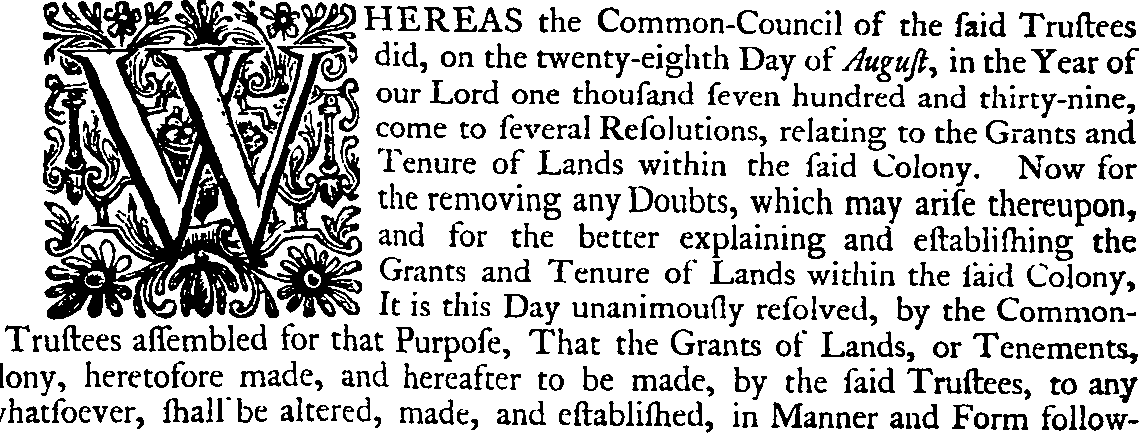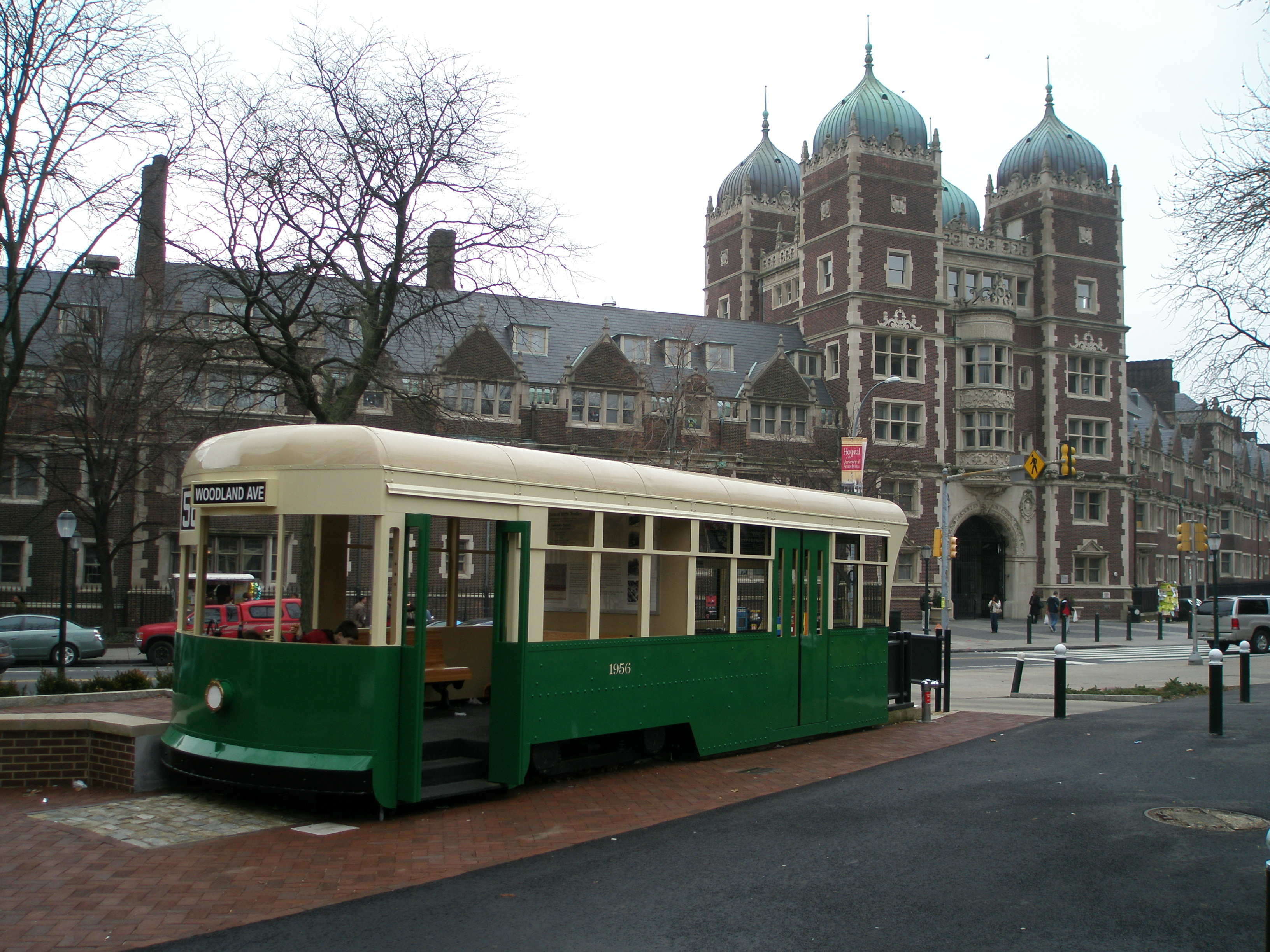|
1751
In Britain and its colonies (except Scotland), 1751 only had 282 days due to the Calendar (New Style) Act 1750, which ended the year on 31 December (rather than nearly three months later according to its previous rule). Events January–March * January 1 – As the Province of Georgia undergoes the transition from a trustee-operated territory to a Crown colony, the prohibition against slavery is lifted by the Trustees for the Establishment of the Colony of Georgia in America. At the time, the Black population of Georgia is approximately 400 people, who had been kept in slavery in violation of the law. By 1790, the enslaved population of Georgia increases to over 29,000 and to 462,000 by 1860. * January 7 – The University of Pennsylvania, conceived 12 years earlier by Benjamin Franklin and its other trustees to provide non-denominational higher education "to train young people for leadership in business, government and public service". rather than for th ... [...More Info...] [...Related Items...] OR: [Wikipedia] [Google] [Baidu] |
Calendar (New Style) Act 1750
The Calendar (New Style) Act 1750 (24 Geo. 2. c. 23), also known as Chesterfield's Act or (in American usage) the British Calendar Act of 1751, is an Act of Parliament, Act of the Parliament of Great Britain. Its purpose was for Great Britain and the British Empire#"First" British Empire (1707–1783), British Empire to adopt the Gregorian calendar (in effect). The Act also changed the start of the legal year from 25March to 1January. The Act wikt:elide, elided eleven days from September 1752. It ordered that religious feast days be held on their traditional dates for example, Christmas Day remained on 25 December. (Easter is a moveable feast: the Act specifies how its date should be calculated.) It ordered that civil and market days for example the quarter days on which rent was due, salaries paid and new labour contracts agreed be moved forward in the calendar by eleven days so that no-one should gain or lose by the change and that markets match the agricultural season. I ... [...More Info...] [...Related Items...] OR: [Wikipedia] [Google] [Baidu] |
Muhyi Ad-Din Muzaffar Jang Hidayat
Muhyi ad-Din Muzaffar Jang Hidayat (died 13 February 1751) was the third Nizam of Hyderabad, Nizam of Hyderabad State, Hyderabad from 1750 until his death in 1751. He had taken up the title of ''Nawab Khan Bahadur, Muzaffar Jung, Nawab Subadar of the Deccan''. However, he is most famously known as Muzaffar Jung. Early Life He was a Punjabi Muslims, Punjabi Muslim of the Jats, Jat tribe as he was the great grandson of Saadullah Khan (Mughal Empire), Nawab Saadullah Khan, the famous Punjabi grand vizier of the Mughal Empire, Mughal empire. He was born to Nawab Mutawassil Khan, the ''Naib Subahdar'' of Bijapur, Karnataka, Bijapur, and his wife ''Sahibzadi'' Khair-un-nisa Begum, the daughter of Qamar-ud-din Khan, Asaf Jah I, Nizam-ul-Mulk. Reign As per the 1749 British records of Fort St. George, Nizam-ul-Mulk even thought about installing Muzaffar Jung when he was dissatisfied with the conduct of Nasir Jung. He gave up that idea due to possible serious repercussions and reconcil ... [...More Info...] [...Related Items...] OR: [Wikipedia] [Google] [Baidu] |
Benjamin Franklin
Benjamin Franklin (April 17, 1790) was an American polymath: a writer, scientist, inventor, statesman, diplomat, printer, publisher and Political philosophy, political philosopher.#britannica, Encyclopædia Britannica, Wood, 2021 Among the most influential intellectuals of his time, Franklin was one of the Founding Fathers of the United States; a Committee of Five, drafter and signer of the United States Declaration of Independence, Declaration of Independence; and the first United States Postmaster General, postmaster general. Born in the Province of Massachusetts Bay, Franklin became a successful Early American publishers and printers, newspaper editor and printer in Philadelphia, the leading city in the colonies, publishing ''The Pennsylvania Gazette'' at age 23. He became wealthy publishing this and ''Poor Richard's Almanack'', which he wrote under the pseudonym "Richard Saunders". After 1767, he was associated with the ''Pennsylvania Chronicle'', a newspaper known for it ... [...More Info...] [...Related Items...] OR: [Wikipedia] [Google] [Baidu] |
Elegy Written In A Country Churchyard
''Elegy Written in a Country Churchyard'' is a poem by Thomas Gray, completed in 1750 and first published in 1751. The poem's origins are unknown, but it was partly inspired by Gray's thoughts following the death of the poet Richard West in 1742. Originally titled ''Stanzas Wrote in a Country Church-Yard'', the poem was completed when Gray was living near the Church of St Giles, Stoke Poges. It was sent to his friend Horace Walpole, 4th Earl of Orford, Horace Walpole, who popularised the poem among London literary circles. Gray was eventually forced to publish the work on 15 February 1751 in order to preempt a magazine publisher from printing an unlicensed copy of the poem. The poem is an elegy in name but not in elegiac couplets, form; it employs a style similar to that of contemporary odes, but it embodies a meditation on death, and remembrance after death. The poem argues that the remembrance can be good and bad, and the narrator finds comfort in pondering the lives of the obs ... [...More Info...] [...Related Items...] OR: [Wikipedia] [Google] [Baidu] |
Nizam Of Hyderabad
Nizam of Hyderabad was the title of the ruler of Hyderabad State ( part of the Indian state of Telangana, and the Kalyana-Karnataka region of Karnataka). ''Nizam'' is a shortened form of (; ), and was the title bestowed upon Asaf Jah I when he was appointed Viceroy of the Deccan by the Mughal emperor Farrukhsiyar. In addition to being the Mughal viceroy (''Naib'') of the Deccan, Asaf Jah I was also the premier courtier of the Mughal Empire until 1724, when he established an independent monarchy, realm based in Hyderabad, but in practice, continued to recognise the nominal authority of emperor. The Asaf Jahi dynasty was founded by Chin Qilich Khan (Asaf Jah I), who served as a ''Naib'' of the Deccan sultanates under the Mughal Empire from 1713 to 1721. He intermittently ruled the region after Emperor Aurangzeb's death in 1707. In 1724 Mughal control weakened, and Asaf Jah became virtually independent. The titular Nizams Battle of Palkhed, fought with the Marathas since the ... [...More Info...] [...Related Items...] OR: [Wikipedia] [Google] [Baidu] |
Qianlong Emperor
The Qianlong Emperor (25 September 17117 February 1799), also known by his temple name Emperor Gaozong of Qing, personal name Hongli, was the fifth Emperor of China, emperor of the Qing dynasty and the fourth Qing emperor to rule over China proper. He reigned officially from 1735 until his abdication in 1796, but retained ultimate power subsequently until his death in 1799, making him one of the longest-reigning monarchs in history as well as one of the longest-lived. The fourth and favourite son of the Yongzheng Emperor, Qianlong ascended the throne in 1735. A highly ambitious military leader, he led Ten Great Campaigns, a series of campaigns into Inner Asia, Burma, Nepal and Vietnam and suppressed rebellions in Jinchuan County, Jinchuan and Taiwan. During his lifetime, he was given the deified title Emperor Manjushri by the Qing's Tibetan subjects. Domestically, Qianlong was a major patron of the arts as well as a prolific writer. He sponsored the compilation of the ''Siku Qu ... [...More Info...] [...Related Items...] OR: [Wikipedia] [Google] [Baidu] |
Lhasa Riot Of 1750
The Lhasa riot of 1750 or Lhasa uprising of 1750 took place in the Tibetan capital Lhasa, and lasted several days during the period of the Qing dynasty's patronage in Tibet. The uprising began on 11 November 1750 after the expected new regent of Tibet, Gyurme Namgyal, was assassinated by two Chinese diplomats, or ambans. As a result, both ''ambans'' were murdered, and 51 Qing soldiers and 77 Chinese citizens were killed in the uprising. A year later the leader of the rebellion, Lobsang Trashi, and fourteen other rebels were executed by Qing officials. Origins of the riot Pholhanas, the regent of Tibet, died in February 1747, during his time in office the country had enjoyed a relatively tranquil period, still, he had had discords with the Dalai Lama and news of them had reached Beijing after 1745. The ambans had mediated some of these conflicts, but the relations between them remained tense. In 1746 the Dalai Lama secretly sent a mission to Beijing to complain to the Emp ... [...More Info...] [...Related Items...] OR: [Wikipedia] [Google] [Baidu] |
Thomas Gray
Thomas Gray (26 December 1716 – 30 July 1771) was an English poet, letter-writer, and classics, classical scholar at Cambridge University, being a fellow first of Peterhouse then of Pembroke College, Cambridge, Pembroke College. He is widely known for his ''Elegy Written in a Country Churchyard,'' published in 1751. Gray was a Self-criticism, self-critical writer who published only 13 poems in his lifetime, despite being very popular. He was even offered the position of Poet laureate, Poet Laureate in 1757 after the death of Colley Cibber, though he declined. Early life and education Thomas Gray was born in Cornhill, London. His father, Philip Gray, was a scrivener and his mother, Dorothy Antrobus, was a milliner. He was the fifth of twelve children, and the only one to survive infancy.John D. Baird, 'Gray, Thomas (1716–1771)', ''Oxford Dictionary of National Biography'' (Oxford University Press, 2004Accessed 21 February 2012/ref> An 1803 newspaper article including a biog ... [...More Info...] [...Related Items...] OR: [Wikipedia] [Google] [Baidu] |
Trustee Georgia
Trustee Georgia is the name of the period covering the first twenty years of History of Georgia (U.S. state), Georgia history, from 1732–1752, because during that time the English Province of Georgia was governed by a board of trustees. England's George II of Great Britain, King George II, for whom the colony was named, signed a charter establishing the colony and creating its governing board on July 7, 1732. His action culminated a lengthy process. Tomochichi was a Native American that resides along the Savannah River that allowed Oglethorpe to settle on the Yamacraw Bluff. The charter was granted to the Trustees for the Establishment of the Colony of Georgia in America, a group formed by James Oglethorpe. Oglethorpe envisioned the province as a location for the resettlement of English debtors and " worthy poor", although few debtors were part of the organized settlement of Georgia. Another motivation for the founding of the colony was to create a "buffer state" (border), or " ... [...More Info...] [...Related Items...] OR: [Wikipedia] [Google] [Baidu] |
University Of Pennsylvania
The University of Pennsylvania (Penn or UPenn) is a Private university, private Ivy League research university in Philadelphia, Pennsylvania, United States. One of nine colonial colleges, it was chartered in 1755 through the efforts of founder and first president Benjamin Franklin, who had advocated for an educational institution that trained leaders in academia, commerce, and public service. The university has four undergraduate schools and 12 graduate and professional schools. Schools enrolling undergraduates include the College of Arts and Sciences, the University of Pennsylvania School of Engineering and Applied Science, School of Engineering and Applied Science, the Wharton School, and the University of Pennsylvania School of Nursing, School of Nursing. Among its graduate schools are its University of Pennsylvania Law School, law school, whose first professor, James Wilson (Founding Father), James Wilson, helped write the Constitution of the United States, U.S. Cons ... [...More Info...] [...Related Items...] OR: [Wikipedia] [Google] [Baidu] |
April 5
Events Pre-1600 * 823 – Lothair I is crowned King of Italy by Pope Paschal I. * 919 – The Fatimid invasion of Egypt (919–921), second Fatimid invasion of Medieval Egypt, Egypt begins, when the Fatimid heir-apparent, Al-Qa'im (Fatimid caliph), al-Qa'im bi-Amr Allah, sets out from Raqqada at the head of his army. *1242 – During the Battle on the Ice of Lake Peipus, Republic of Novgorod, Russian forces, led by Alexander Nevsky, rebuff an invasion attempt by the Teutonic Knights. *1536 – Charles V, Holy Roman Emperor, Charles V makes a Royal Entry into Rome, demolishing a swath of the city to re-enact a Roman triumph. *1566 – Two hundred Habsburg Netherlands, Dutch noblemen, led by Hendrick van Brederode, force themselves into the presence of Margaret of Parma and present the Compromise of Nobles, Petition of Compromise, denouncing the Spanish Inquisition in the Seventeen Provinces. 1601–1900 *1614 – In Virginia, Native Americans in the Unit ... [...More Info...] [...Related Items...] OR: [Wikipedia] [Google] [Baidu] |
Trustees For The Establishment Of The Colony Of Georgia In America
The Trustees for the Establishment of the Colony of Georgia in America, or simply the Georgia Trustees, was a body organized by James Oglethorpe, James Edward Oglethorpe and associates following parliamentary investigations into prison conditions in Britain. After being granted a royal charter in 1732, Oglethorpe led the first group of colonists to the new colony, arriving there in February, 1733. The trustees governed Georgia (U.S. state), Georgia, one of the Thirteen Colonies, from its founding until 1752, a period known as Trustee Georgia. Background Parliament established a committee to investigate prison conditions in February, 1729 and Oglethorpe was appointed chair. The work of the committee resulted in the release of prisoners onto the streets of London and other cities without prospect of employment, and Oglethorpe conceived the idea of a colony as a means of productively employing such people. The plan for the colony quickly broadened in scope to encompass several philanth ... [...More Info...] [...Related Items...] OR: [Wikipedia] [Google] [Baidu] |
